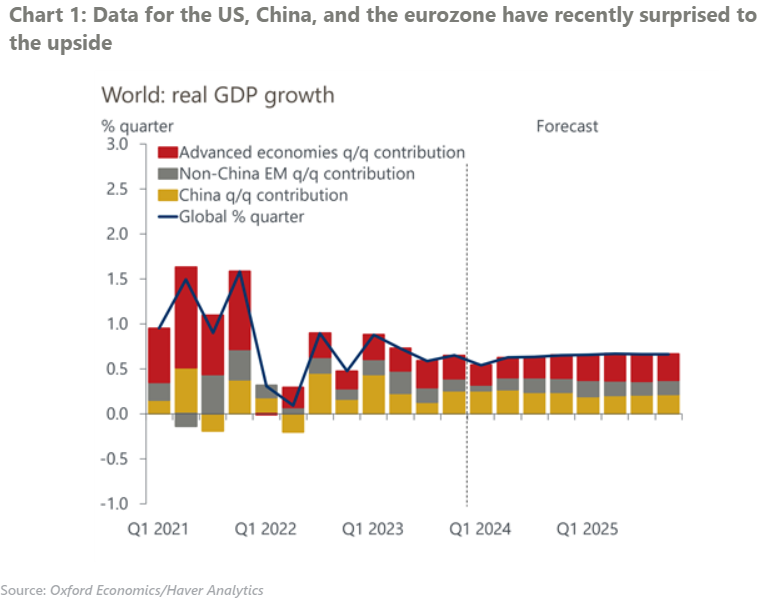Commodities: Strong advanced economy demand boosts prices
What you will learn:
- Brent crude has risen to $90pb as resurgent demand and geopolitical uncertainty drives bullish price action. We forecast a moderate decline in oil prices from Q3 onwards with Brent closing this year at $80pb.
- Precious metals prices rallied last month, with gold reaching multiple all-time highs. Strong structural demand forces created a very supportive environment for gold, with EM central banks, Chinese consumers, and money managers the biggest buyers of the metal recently. We’ve raised our outlook in the short term, but think that the rally has run out of momentum.
- We’ve cut our iron ore price forecast after a sharp fall in March. We’ve raised all our H2 2024 steel price forecasts marginally as we expect the global industrial cycle to slowly improve.
To learn more about our price forecasts for base metals, precious metals, battery raw materials and food, please submit the form to download the full report.

Tags:
Related Reports

Post
Ukraine-Russia ceasefire changes risk profile for commodities
We assess the implications and risks for our commodity price forecasts against the backdrop of a 'fragile' ceasefire in the Russia-Ukraine conflict.
Find Out More
Post
Trump’s tariffs on Canada would raise regional commodity prices
A blanket 25% tariff on Canadian imports to the US could have a significant impact on commodity prices, squeeze profit margins of Canadian exporters and raise prices for US end-users.
Find Out More
Post
Commodity Key Themes 2025: Expect market turbulence
The commodity markets are poised for significant shifts influenced by geopolitical developments, economic policies and global demand dynamics in 2025.
Find Out More